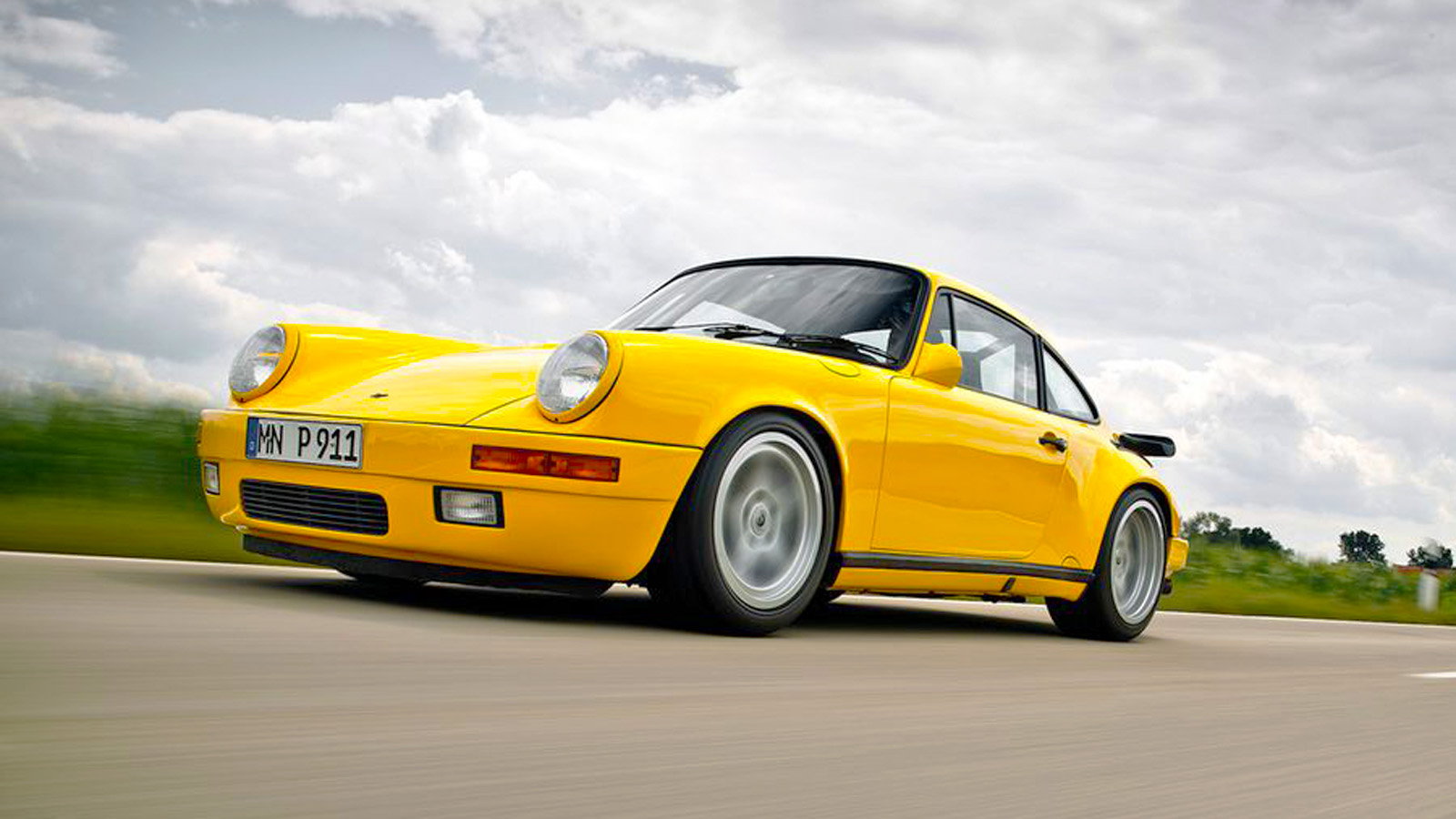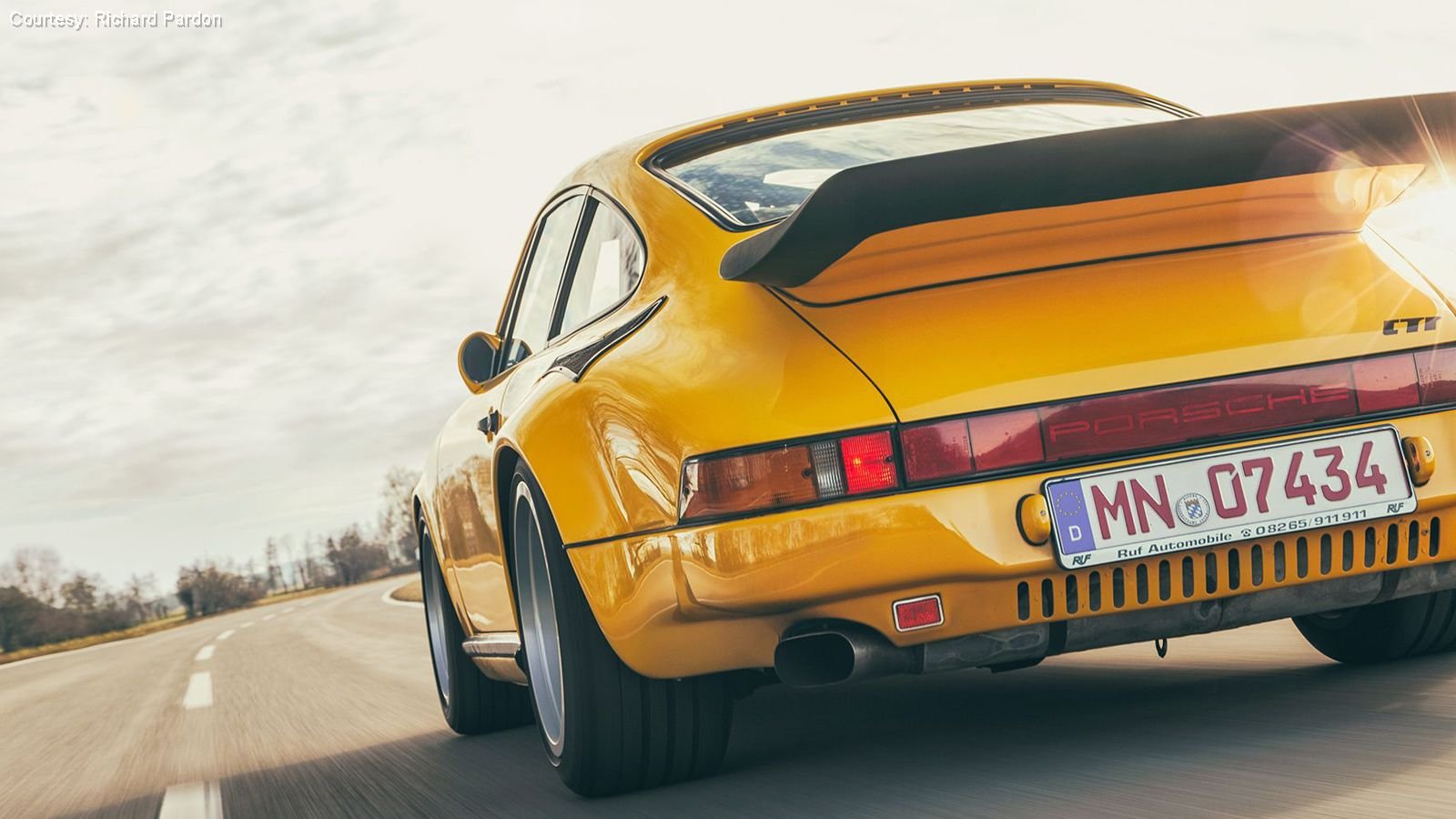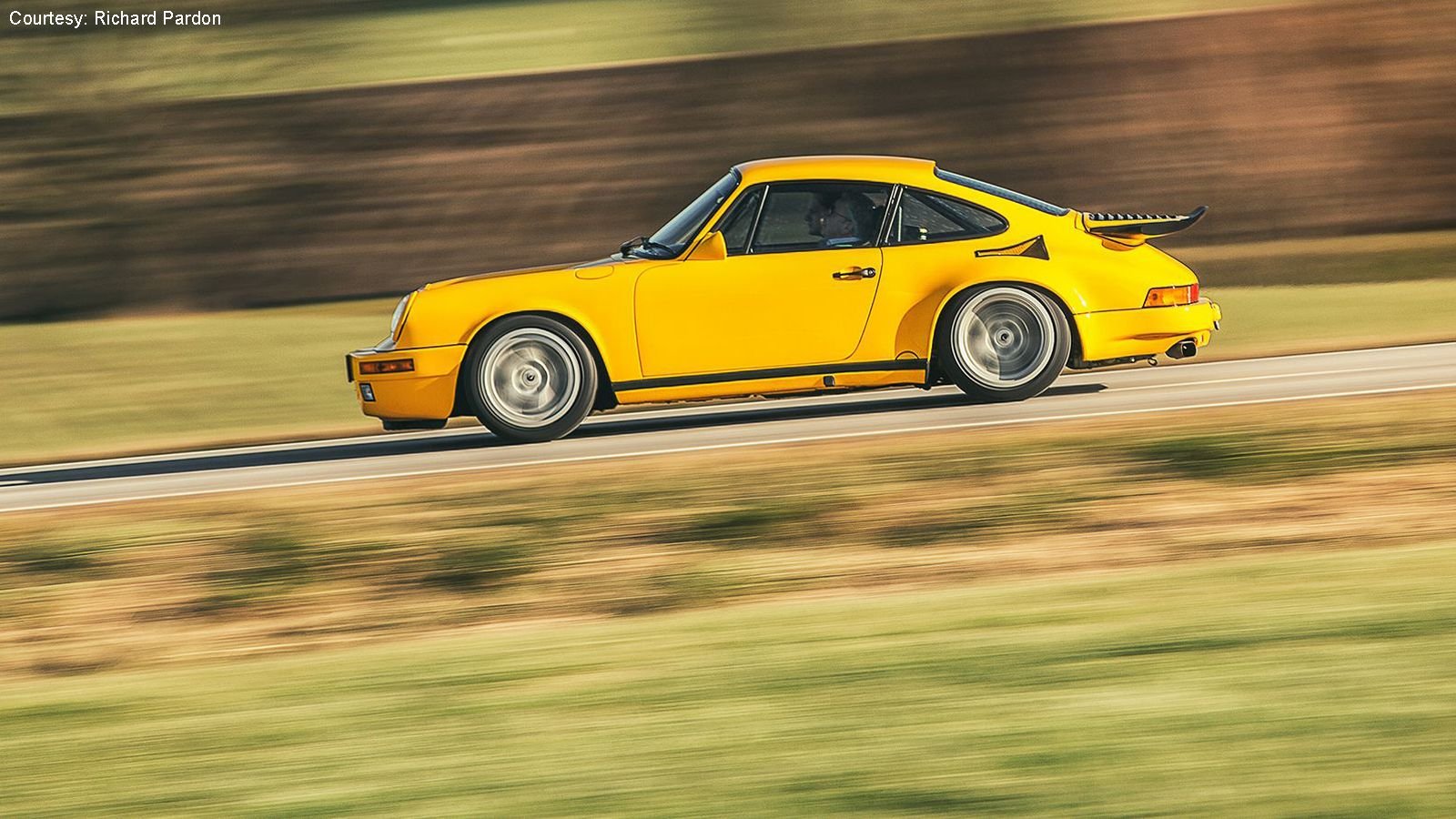Daily Slideshow: How the Ruf CTR Became the Fastest Car in the World
That one time Alois Ruf's CTR won the title of World's Fastest.












Back to the Future
Four hundred and sixty-nine horsepower was a lot in 1987. Porsche's 198-mph 959, whose looks are still an acquired taste, could only manage 444 horsepower, and if you could get one for the list price it was going to set you back $225,000. Alois Ruf built his first Ruf CTR in a garage next to the house in which he was born, in the city of Pfaffenhausen, Germany, and in July of 1987 that twin turbo 911 CTR achieved 211mph on a 15.5 mile long oval test in Ehra-Lessien, making it the world's fastest street-legal (semi-)production car. In winning that title the CTR, which became known as the Yellow Bird, nudged out a Lamborghini Countach 5000S Quattrovalvole, the massive Ferrari Testarossa, and not one but two factory Porsche 959s, as a participant in the part-test, part-competition set up by Road & Track for its World's Fastest Cars issue.
>>Join the conversation about the 1987 Ruf CTR Yellow Bird Porsche right here in the Rennlist Forum!
Video Star
Being anointed "world's fastest" in a major magazine gets you noticed, and Ruf started turning out CTRs, short for Group C Turbo Ruf, for customers. A slick promo video of Ruf's best friend Stefan Roser piloting the CTR around the Nürburgring back then, getting squirrely in just about every corner and not bothering with a helmet or even long sleeves, went viral before YouTube made that part of our vocabulary. Ruf, who's 68 this year, is still making vehicles and for the CTR’s 30th anniversary he created a 700 horsepower carbon-fiber bodied 911 that pays tribute to his air-cooled world beater.
>>Join the conversation about the 1987 Ruf CTR Yellow Bird Porsche right here in the Rennlist Forum!
911 People
In 2016 Ruf sat down with Road & Track's Sam Smith to talk performance and Porsches and what follows are some of the takeaways from that chat.
About his allegiance to the 911 line:
"We built up an image as a specialist. Then in the late Seventies, Stuttgart announced the final call of the 911. [A few] more years, then it’s the end. I realized that there is a community of people who want 911s, no matter what. I said, 'Even if the community is small, I’ll stick with those people, because I like the 911, too. I’m okay with that.' I wanted to continue making special models because Porsche had shrunk the [non-Turbo] lineup down to the 911 SC. And the answer from Porsche was, 'Well, the 911, you cannot do more with this car. This is the end. You should switch to a 928.'"
Regarding the building of Ruf's own five-speed gearboxes:
"Porsche said, 'This car doesn’t need a five-speed. Such strong torque. Four-speed is good enough. Most people who can afford that expensive car, they don’t want to mess with a fifth gear.' The complete reverse of what they do today and what they did before. The 911’s last call, that was an opportunity. When they decided for a four-speed, we could go to a five. When they went to a five, we went to a six. They always left a gap where we said, Okay, we can step in and do this.'"
>>Join the conversation about the 1987 Ruf CTR Yellow Bird Porsche right here in the Rennlist Forum!
Birth of the Yellow Bird
Ruf on the genesis of the Yellow Bird and the World's Fastest test:
"That project was originally called 945R. That idea came in 1980. “Nine” because it was based on the 911, and “45” for 450 hp. That was an exorbitant number at that time. We were thinking how we could achieve that, twin-turbocharging, because of the [single-turbo] 930 engines, they were already too aged when they came out. But in 1982, I heard through the grapevine that Porsche was going to make a supercar . . . the 959. That scared me. I thought, Gosh . . . we have no chance. The [Yellow Bird] engine was the leftover from that dream. The five-speed gearbox was our design from 1981, so we put that all into the regular shape of a 911, with the shaved rain gutters, to make the car more distinctive and also better aerodynamically. We kept the car as light and as simple as possible. It was so great. I mean, Phil Hill [F-1 champion, who was the magazine's test driver] was so excited. The guys, they were competing with each other. Paul came in and he had the number written on his palm—336.1 km/h. He was all excited. And then Phil got in the car and came back—339.8 km/h. [Laughs.] It was a milestone."
>>Join the conversation about the 1987 Ruf CTR Yellow Bird Porsche right here in the Rennlist Forum!
Crossstown Traffic
Ruf on his relationship with Porsche:
"It was always comme ci, comme ça. Because there was this jealousy, but at the same time, they could always say a Porsche won. Better than a Lamborghini or a Ferrari. The car that looks like a frog. A marketing director at Ferrari once told me, 'I know, your car, it works. It’s a very good car. But look, next to a Ferrari, it looks like a frog.' [Laughs.] It’s the Beetle. But then, we knew what “World’s Fastest Cars” meant—serious driving, to the bone. If an engine lasts there, it lasts anywhere."
>>Join the conversation about the 1987 Ruf CTR Yellow Bird Porsche right here in the Rennlist Forum!
Yesterday, Today, and Tomorrow
Ruf on the Yellow Bird's tech:
"Cars today are computers from A to Z. But we were introducing, in our car, computer technology for engine management. The system was from Bosch, the so-called 1.2, a racing unit also used in the 962. To get that kind of performance, you needed a digital management system. And they were not readily available like today. At the time, Bosch was the one who had the perfect match for our needs, and you were walking in and praying that they would serve you. Thank God, they had one guy who said, 'Okay, I want to help you.' Normally, they only talked to the big OEMs."
And finally, Ruf on the state of the modern performance car and his company's place in that world:
“The things that used to be possible are just not possible anymore. Everything is reduced to electronics and laptops. But we aren’t trying to be in that business anymore. We are a car manufacturer, and since 1981, we put our own chassis numbers on the cars. We are concentrating on building our special models. People have come back to the more . . . down-to-earth cars.”
Down to earth at over 200mph, Alois Ruf's future is one worth looking forward to.
Also, for some added fun for the eyes and ears for any automotive fans here is a short little film in which the Yellow Bird Ruf is a costar. Enjoy.
>>Join the conversation about the 1987 Ruf CTR Yellow Bird Porsche right here in the Rennlist Forum!
For help with maintenance and repair projects, please visit our how-to section this forum.
